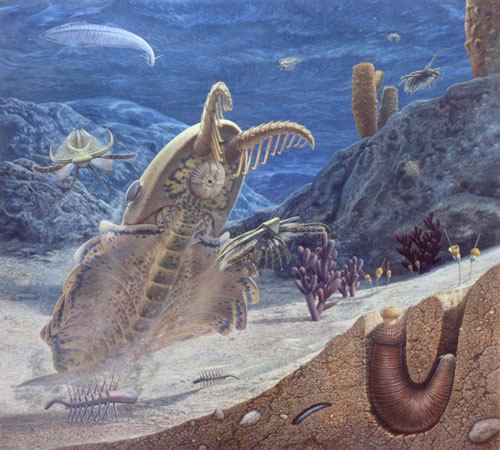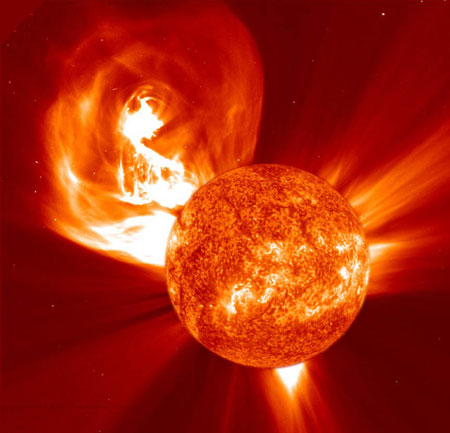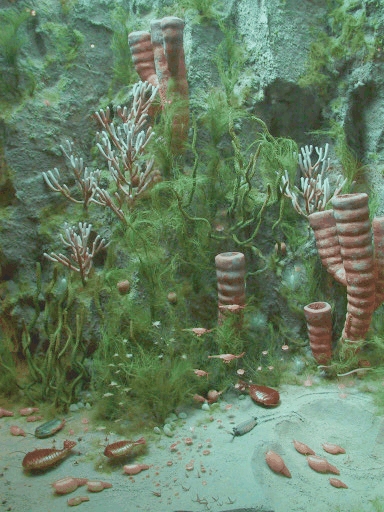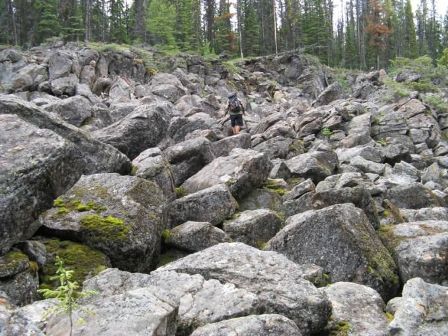

The Monashee Almanac is an online journal that shares history, mysteries and stories about early British Columbia and in particular the Monashee, Okanagan and Shuswap.
Celebrating History, Mysteries & Stories
Since the dawn of civilization there have been conflicting views and beliefs as to how the Earth came to be. Much of what we believe about the beginnings of this planet are built by what we as individuals “believe” or “don’t believe”. Some of us will choose a scientific explanation, while others will choose a spiritual one – but together we might have to agree that our beliefs are based on a certain faith about creation
The story you are about to read is largely based on the science of “geology” but within it are admissions regarding unknowns.
The unknowns are what make natural history so interesting – because history is most intriguing when science blends with mystery and even myth.
At the Monashee Almanac, we will depend on you, the reader, to decide what to believe...
or what not to believe.
Or to simply wonder.
Genesis
Much of what is now southern British Columbia was beneath an ocean. On the right is a graphic representation of early Middle Cambrian marine life 505 million years ago. Fossils of these marine creatures have been found in the Burgess Shale Formation, located near the town of Field in Yoho National Park.
Sidebar:
Mysterious Geological Features and Getting Fossilized
Denison-Bonneau Provincial Park offers some easy access to mysterious geological features and can be reached by turning south from Creighton Valley Road. The park offers an abundance of post-volcanic and glacial history.
The Formation of Planet Earth
20 billion years ago a massive chunk of rock separated from the Sun and was thrown into an orbit at a speed of 29,000 kilometers per second. After eons of irregular propulsions the giant rock slipped into a constant orbit around the Sun. The orbit spun the rock until it formed the shape of an orb and given the perfect distance from the Sun the orb would become the host for a multitude of living things – this orb would become planet Earth.
10 billion years ago Earth was still a desolate place. It lacked oxygen and its atmosphere was made largely of carbon dioxide and nitrogen. But the planet was being bombarded by asteroids which were bringing with them a vast array of compounds and gases – it’s within these stellar events that Earth would find its perfect storm.
This early period is known broadly as the Precambrian Era which accounts for 88% of geologic time. Much of this period saw rigorous change to land masses or plates. The movement of plates has caused the formation and break-up of continents over time, including the occasional formation of a super continent that contained most or all of the continents we know today.
Columbia, also known as Nuna and Hudsonland, was one of Earth's oldest super continents. It is thought to have existed approximately 1.8 to 1.5 billion years ago and is estimated to have been about 12,900 kilometres from North to South, and about 4,800 km across at its broadest part.
The east coast of India was attached to western North America, with southern Australia against western Canada.

20 billion years ago a massive chunk of rock separated from the Sun and was thrown into an orbit at a speed of 29,000 kilometers per second. After eons of irregular propulsions the giant rock slipped into a constant orbit around the Sun.

A graphic representation of early aquatic plants and marine life during the Middle Cambrian period 505 million years ago. Fossils of these marine creatures have been found in the Burgess Shale Formation, located near the town of Field in Yoho National Park.
Most of South America spun so that the western edge of modern-day Brazil lined up with eastern North America, forming a continental margin that extended into the southern edge of Scandinavia.
When Columbia began to fragment about 1.6 billion years ago huge land masses began to drift in a vast ocean and they would eventually collide, join and fragment again. These great collisions of land masses caused mountain building forces and multiple volcanic eruptions. There were periods of erosion, glaciations and meteoroic impacts. There was massive shifts in the landscape as many different land masses or land fragments called craton’s drifted in many different directions.
The Precambrian craton that lies beneath the Okanagan and the Shuswap is called the Shuswap Terrain and is over two billion years old and represents the broken edge of the western part of the early craton in western Canada. It is part of the Omineca Belt of rocks that stretches along the Rocky Mountain Trench for 2000 kilometers to Alaska . This rigid remnant of an ancient mountain chain has throughout most of its post-Precambrian history formed a major structural element separating the western Canadian sedimentary basin from other environments in the ancient Pacific basin.
Early Life Appears
Previous to the Precambrian period, early primordial life was challenged because the atmosphere lacked oxygen. Nitrogen and carbon dioxide were the main components enveloping the Earth however after billions of years of terrestrial storms, life forms first emerged 3 to 4 billion years ago in primitive oceans.
Much of what is now southern British Columbia was beneath an ocean and when life emerged, it would have most likely been marine life. The Burgess Shale Formation, located in the Canadian Rockies is near the town of Field in Yoho National Park and it is one of the world's most celebrated fossil fields. It is famous for the exceptional preservation of the soft parts of its fossils. At 505 million years (Middle Cambrian) old it is one of the earliest fossil beds containing the imprints of the soft-parts of ancient marine species.
Fossils found in Shale outcroppings provide a story of early life in the Okanagan and Shuswap; free-swimming (nectonic) organisms are relatively rare, with the majority of organisms being bottom dwelling (benthic) — either moving about (vagrant) or permanently attached to the sea floor (sessile). About two-thirds of the Burgess Shale organisms lived by feeding on the organic content they found on the muddy sea floor, while almost a third filtered out fine particles from the water body environment. Fewer than 10% of organisms were predators or scavengers, although since these organisms were larger, the biomass was split equally between each of the filter feeding, deposit feeding, predatory and scavenging organisms.
The Paleozoic Era
The Paleozoic era which means the era of old life forms existed from 542 to 251 million years ago. During the Paleozoic, many modern groups of life came into existence. Life colonized the land, first plants, then animals. Life usually evolved slowly. At times, however, there are sudden radiations of new species or mass extinctions. These bursts of evolution were often caused by unexpected changes in the environment resulting from natural disasters such as volcanic activity, meteorite impacts or climate change.
During the Paleozoic Era, the Okanagan was largely a fragmented archipelagic cratonic landmass. It separated a comparatively stable subsiding oceanic basin that existed in Alberta and Saskatchewan (the Rocky Mountain Geosyncline) from the vast oceanic environment of the ancient Pacific Ocean to the west. The eastern basin was dominated by deposits of carbonate rocks such as tropical reefs, shallow water limestones, and basins of shale. Sea life was prolific, temperatures were balmy, and so much organic decay occurred that a great amount of hydrocarbons accumulated, destined to be exploited far in the future.
Some kind of major event or perhaps a multitude of events happened to planet Earth at the end of the Paleozoic. Oceanic environments appear to have changed dramatically in ecology almost “overnight”. A vast number of fauna and flora groups suddenly became extinct, never to be seen again except in fossil form, and the Earth became subjected to glaciation. Although this major break in geologic time has been known for a long time, geologists still do not know what happened – and this period remains a mystery.
Rock hoodoos hidden in the forest define an age when the Earth was a torrent with lava and volcanic vents. Because the area is remote and largely unknown, much of the secrets of this geological landscape have yet to be revealed.
The area is probably an erosional remnant of an extensive volcanic complex that developed after a huge chasm split open the Earth’s crust along the ancestral Okanagan Valley possibly 60 million years ago, in early Tertiary times. The site then witnessed the last significant geologic event here, which involved erosion by thick glaciers and ice sheets that periodically ground their way across the land during the Ice Age that began about two million years ago.
The Okanagan and most of British Columbia may have been glaciated at least six times. The latest glacial event is known as the Fraser Glacier that advanced 20 to 25 thousand years ago, and began to melt about 15,000 years ago. As the glacial melt occurred some of the landscape became submerged under water while high points in the Okanagan Highlands where Denison-Bonneau Park is found, served as islands which may have eventually formed a land bridge that meandered between two great inland seas.
Getting Fossilized
The Royal BC Museum has within it a fossil collection, of approximately 55,000 specimens, ranging from delicate impressions from the Paleozoic Burgess shale (nearly 600 million years old)to mammoth and mastodon bones and teeth of the last 20,000 years.
The museum has beautifully preserved remains of fish that once swam in the Triassic seas where the Rockies now stand. Ammonite fossils represent many swimming cephalopod mollusks that lived 70 to 90 million years ago in Late Cretaceous seas on what is now the east side of Vancouver Island.
The Haida Gwaii (formerly known as the Queen Charlotte Islands) are represented by many invertebrate species. The collection also contains turtles and bones and footprints of dinosaurs that roamed northern BC at the end of the Cretaceous, 50 million-year-old plant and insect fossils from the Kamloops area, and mollusks and vertebrate remains from 25 million years ago found at Sooke on Vancouver Island. Bird bones from Hornby Island, bison bones from Victoria and samples of lake, bog and stratigraphic sections from the last ice ages (Pleistocene Epoch) are also preserved.
The museums earliest fossils were collected in the 1870s by George M. Dawson an ealy exploer of the Monashee. Recent additions include a fossil bird and fish from the interior of BC, a Cretaceous fossil plant collection and a mammoth tusk collected from the Cowichan River.

Rocks:
Mysterious Geological Features and Getting Fossilized
Denison-Bonneau Provincial Park offers some easy access to mysterious geological features and can be reached by turning south from Creighton Valley Road.
The park offers an abundance
of post-volcanic and glacial history;
however, this exceptional feature
of the park is not well studied or documented.
